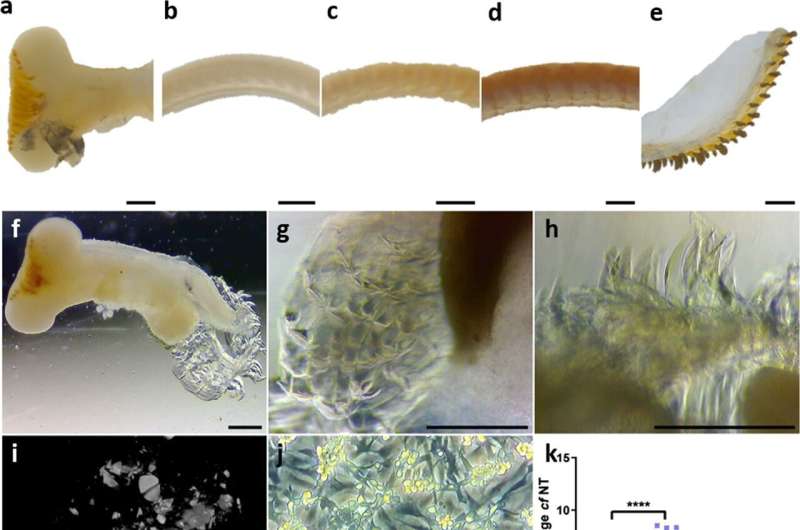Phys.org July 7, 2022
The small aquatic snail-like mollusks use a tongue bristling with tiny, microscopic teeth to scrape food off rocks and into their mouths. These teeth contain a hard yet flexible composite, which in 2015 was found to be the strongest known biologically occurring material, far stronger than spider silk and comparable to man-made substances, including carbon fiber and Kevlar. An international team of researchers (UK, Poland USA – industry, Switzerland) has replicated the limpet tooth developmental processes ex vivo, where isolated limpet tissue and cells in culture generated new biomimetic structures. Transcriptomic analysis of each developmental stage of the radula, the organ from which limpet teeth originate, identified sequential changes in expression of genes related to chitin and iron processing. They quantified iron and chitin metabolic processes in the radula and grew isolated radula cells in vitro. According to the researchers bioinspired material can be developed with electrospun chitin mineralized by conditioning media from cultured radula cells…read more. Open Access TECHNICAL ARTICLE

The Formation Zone is critical in radula development and regeneration… Credit: Nature Communications volume 13, Article number: 3753 (2022)